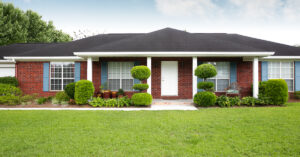Whether your clients develop suburban office parks, retail centers in trendy neighborhoods or high-density apartment complexes, chances are their projects — and related financing needs — have parking components to handle the needs of tenants and customers.
Parking facilities can be lucrative investment opportunities. They generated revenues nationwide of $9.8 billion in 2017, with revenues growing at a 3.3 percent annual clip from 2012 to 2017, according to Nuveen, an investment management company. Dennis Burns, a private-sector parking planner and spokesman for the International Parking & Mobility Institute, spoke with Scotsman Guide about parking-industry trends that may influence commercial real estate deals.
What does the future look like for U.S. parking facilities as self-driving vehicles become prevalent?
The timing and the adoption of technology, I think, is all pretty uncertain. But, given that, I think it’s a pretty clear trend that we’re expecting to see parking-demand reductions in the future based on the combination of the potential of autonomous vehicles and a very real movement toward mobility.
Our projections were that we could see anywhere from 35 to 45 percent parking reductions in about a 25- or 30-year time frame. [If] you’re expecting payment from those parking resources to essentially pay for the structure, or at least a big part of it, that’s a pretty scary scenario — knowing that the demand could drop by as much as 40 percent in the future.
Everybody, I think, is taking more of a look-and-see attitude. But the ideas that are floating around out there, so that we’re not overbuilding parking for a future that won’t need it, [include] things like one-level parking structures over existing surface parking lots, so it’s essentially a parking lid, if you will.
Are mass-transit developments or the rise in ride-sharing services hurting the demand for parking facilities?
I think people are considering the fact that they’ve got more options and they don’t necessarily have to drive everywhere, especially the younger generations that would rather not own a car and just essentially buy a ride when they need it. There are all kinds of benefits — no insurance, no maintenance, all that kind of stuff.
There are ways to modify these structures, if we think about it in advance. Of course, we also need to accommodate more curb-lane capacity or short-term storage capacity for things like TNC (transportation network companies, such as Uber and Lyft). … It’s a mixed bag of [the following]: What do we think is going to happen down the road? How fast is it going to happen? And should we start preparing for this now and start actually building garages differently?
How easily are parking facilities getting financed right now?
There is a real desire to try to build less parking, because we feel like there’s less need for it. … Still, the banks are the ones that are uncomfortable providing less parking, because if you don’t provide enough parking, then you don’t have enough customers in the door. And that’s problematic from their point of view, in that the whole development might go under if you’re not serving it well. I think the banks are keeping up the pressure on parking requirements to some degree.
Maybe it’s an issue of educating the banking community about the changes in mobility, so that they’ll become a little more comfortable with lower parking requirements. I think that might be a trend that we’ll see going forward, and the planners that are pushing for these lower requirements, we need to do a better job of making sure the banks are on board and convinced that what we’re proposing will actually work.
Is it easier to develop new parking facilities in suburban areas where land costs are lower?
I think the suburbs, generally, they don’t have all of the mobility options that a dense downtown might, like a San Francisco, Washington, D.C., or New York City. I think the suburbs in smaller communities are going to be behind that curve dramatically. I think that they’ll probably continue to invest in parking.
In smaller downtowns — places like Boise, Idaho, and Missoula, Montana — they’re seeing the value of the denser urban environment and promoting the whole concept of walkability and multimodal options. All those places are starting to follow the trends of the bigger cities to some degree, but they’re still planning on building parking structures for the next 20 or 30 years.




